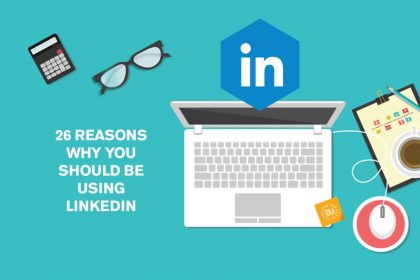The advanced guide to selling on Pinterest
It’s official – social media is an important driver of online retail sales. And of all the social media sites to plug your wares, the signs show that Pinterest has to be your number one choice.
Pinterest, it seems, is going from strength to strength, especially in the retail sector. Recent research into online buying habits revealed that US retailers’ 2013 sales from social media traffic increased by almost 63% to US$2.69 billion – up from US$1.65 billion the previous year.
Online retailers have also found that traffic from Pinterest is particularly lucrative, with an average order value of US$123.50. To put the advantage of traffic from Pinterest into context, buyers who come via Facebook are apparently worth an average order value of just US$54.64 – that’s around 126% less.
All of which means that if you’re selling anything online, mastering Pinterest should be high up on your list of priorities. And that’s just what this masterclass from marketing expert Emilia Rice will help you to do.
Why Pinterest is so popular with online retailers
One of the main reasons Pinterest works so brilliantly with online retail is that it’s an image-rich site. Importantly, this makes it easy for retailers to showcase their products in an engaging way, and one that shoppers absolutely love.
This key advantage over other social media platforms means you can display your products (and prices) to millions of potential customers – and turn your board into your own shop front, catalogue or gift guide.
And if all this isn’t enough to sway you, maybe these facts will:
- In August 2012, Pinterest became the fourth largest traffic source in the world (apparently it drives more referral traffic than Google+, YouTube and LinkedIn combined).
- In the US, Pinterest hit a staggering 10 million unique monthly visitors faster than any other standalone site in history. Today it gets well over 20 million unique monthly visitors.
- 80% of women in the US say they trust Pinterest as a source of information and advice.
- Shoppers referred to a retail site from Pinterest are 10% more likely to follow through with a purchase than visitors from other social media sites.
So you’re convinced that Pinterest is the right social media site for marketing your products. Now what? How do you quickly become an expert and reap the many rewards of investing time on the site?
How to add a price tag to your Pinterest pins
Before you learn any new Pinterest marketing strategies there’s one thing you need to know how to do – and that’s add a price tag to your pins. So if someone IS interested in what they see on your page, they know it’s for sale and whether it’s within their budget. (It also means your products can be found in Pinterest’s gift category.)
To add a price tag to your pin you simply need to type the price of the product in the description with either a dollar sign ($), or a pound symbol (£). (At the minute these are the only currencies that you can use.) When adding a price tag you also need to add a link to your website so any interested shoppers can learn more about (and hopefully buy) the product that caught their eye.
Your price tag and link will then be automatically added, letting people know how much an item is going to cost, making it easy for them to visit your site, and increasing the likelihood that they will actually go ahead with a purchase.
How to be creative when selling on Pinterest
One of the most important things to remember when it comes to social media marketing and selling is that people don’t like to feel that they’re being sold to.
In fact it can be quite off-putting and even irritating if you feel your interaction with a brand is just about them getting your money. So in order to sell successfully via Pinterest you need to get creative with your marketing.
Use product placement
Product placement can be a great way of indirectly selling your products. Create a ‘how to’ or information board that teaches people how to do something, and make sure you get your product or brand name in there somewhere. (A brilliant example of a product placement is Mirabeau Wine – they managed to get their bottle and brand in front of 5 million YouTube viewers and counting!)
By using images or videos to show your product or service positively, you can create a desire for what you’re selling without people even realising they’re being sold to.
Make it easy to buy
Another important tactic is to make it easy for your Pinterest followers to buy your products by letting people know how much they are and where they can buy them.
As explained, adding price tags to your images lets people know that what they see is for sale, and how much it costs. So if they are interested in buying and it’s within their budget, they can easily click through and purchase it.
Make your content shareable
Viral reach is huge when it comes to social media marketing and selling via your social media platforms (again just look at the Mirabeau Wine video for the perfect example). So make sure your pins are enticing enough to be shared by others, and use engaging language. Again subtly is the key here – a hard sell will stand out a mile!
The trick is make your Pinterest followers think that buying from you is their idea, and not part of a carefully crafted sales plan.
Make the most of any famous customers
If you are lucky and someone well known or influential uses your product, then make the most of it. If you can get a picture of them with it or using it, or a quote or testimonial from them about it – fabulous! If not, you can always mention that they’ve bought a particular product in your description.
Marketing your brand with a gift guide or themed board
One of the best ways to market your brand and sell your products or services via Pinterest, is by turning one or more of your boards into a gift guide or themed board.
Gift guides and themed boards give you the opportunity to capture an entirely new customer base, as some people will follow your Pinterest board purely for them.
Attract shoppers with gift guides
Essentially gift guides are your pick of gifts for a particular occasion, such as Christmas or Valentine’s Day. You group suitable products for that occasion in one board for your followers to browse. Not only do gift boards attract followers, but importantly they’re often used by people actively looking for something to buy. In other words, people ready to shop!
As well as occasions, you could create boards themed around particular people, such as mums, dads, partners, sisters, or even children of different ages. If you have a number of products in different prince ranges, you can create price-themed boards, such as ‘Gifts under £10’. There really is no limit to the number of themes you could come up with.
As always remember to add price tags and links to help your gift products get found on Pinterest, and encourage browsers to buy.
Group complimentary products in themed boards
If your products aren’t really gift-friendly, you can create other boards to market them, such as DIY, baby care essentials, greeting cards, top trends or even seasonal boards. The main idea is to group a number of products that a key target audience would enjoy browsing in one place.
Once you’ve created your boards, make sure the name you choose for them clearly reflects the products that you are marketing. It’s also important to remember that you’ll need to promote your boards. You can spend hours creating the perfect board, but if you haven’t told people it’s there and shared the link, you won’t earn anything from your efforts.
How to use Pinterest to drive traffic to your website
Gift guides and themed boards are also great for driving traffic to your website – so even if someone isn’t ready to buy from you now, they can look around your site, learn more about you and your brand, and hopefully return later to make a purchase when they do need what you’re selling.
But as with all social media sites, you can’t just create boards and sit back and wait for traffic (or just pin and hope) – you need to help drive it. And there are a few things you need to remember when creating your traffic strategy
Pin other peoples’ content too
Make sure that most of the content you pin on Pinterest is not about your own company. Remember the 20% self-promotion rule (post 20% of your own content, and 80% of other people’s) and generously share content that you know your target audience will like.
By doing this you’ll make your boards more interesting, varied and popular, while still posting enough of your own products to benefit from a steady flow of traffic from your Pinterest account to your business website or blog.
Use other social media sites
To get traffic from your Pinterest site, you need to drive traffic to it. So make the most of your networks on other social media sites and promote your Pinterest board and pins on Facebook, Twitter, Google+ and any other platforms you’re active on.
Also look for relevant blogs, and leave comments with a link to your Pinterest account. Or write guest articles or blogs for established sites, again with a link back to Pinterest. Basically, the more places you can share your link, the better.
Use keywords
Don’t forget to make good use of keywords on your Pinterest boards too – they can help the right customer to find you. To see what kind of keywords are popular in your niche (and what people who are interested in these keywords are pinning) make some time to do some research.
If you’ve researched your target market properly, then when they do find your boards via your carefully chosen keywords, they’ll be much more likely to click through to your business site.
Be relevant
To ensure you’re regularly converting Pinterest users into traffic for your website or blog, make sure your pins are consistently relevant to your niche.
If you’ve worked hard to drive potential shoppers to your Pinterest boards, you need to make sure that when they find on them meets their expectations and encourages them to click through to your business site to make a purchase.
Our 15 top Pinterest marketing tips
Once you’ve got an idea of your Pinterest strategy in place, there are a few things you need to remember to keep it working for you. Here are our top 15 Pinterest marketing tips:
- Show the human side to your brand – Pinterest is a great place to really let people see who you are – your values, taste and personality. Not only is it more enjoyable connecting with others on a more personal basis, but it’s also a great chance to build loyalty to your brand.
- Show behind the scenes images – On a similar note, it can be a great idea to give your followers a glimpse behind the scenes of your business – especially if it’s service-based. It’s less easy to drive direct sales through Pinterest if you don’t have a physical product to promote, but you can always use a ‘behind the scenes’ board to show off what you do. This could include photographs of you at work, your workspace, or even ‘staff’ or ‘about us’ boards.
- Make sure your gift guides are tagged correctly – Pinterest has a category just for gifts (searchable by price), so if you’ve created a gift guide, make sure you tag it correctly with prices. When you’ve done so, your pins should automatically appear in the gifts section.
- Make sure your boards and pins are easy to find – Make it as easy as possible for other Pinterest users to find your pins by labelling and categorising them correctly, adding the right tags and using keywords and #tags.
- Create tutorial boards – Tutorials and ‘how to’ boards are very popular and a fantastic way of creating a following on Pinterest. You can pin Youtube videos, infographics, or step-by-step guides.
- Market but don’t spam – There’s a very important difference between the two, and it’s essential to remember that Pinterest is a social media platform, not an out-and-out retail environment – and spamming will never help your business. So strike a healthy balance between genuine sharing and adding value, and (subtly) pushing your own products.
- Become an authority – By sharing content of real value to others (not just your own products) you can build relationships and establish yourself as an authority in your niche. This will draw people to your boards, and make them more likely to click through to your website or blog.
- Be unique – Take time to research and curate great pins – and the more unique they are, the better. Pinterest is a busy place, and pinning content no one else has is a great way to stand out – and get repinned.
- Be social – Just like other social media platforms, the secret of success on Pinterest is relationships. So don’t be shy – get out there and connect with other users. Like and comment on other users’ pins, and use # and @ when relevant. Also remember to thank people who pin you – not only is it nice, but they’re much more likely to engage with you again in future.
- Add prices and links – This is so important we make no apologies for mentioning it again! Always make sure your product pins have their price and link to shop page added to them, so they can be found under the gift category by price band – and potential customers can easily click through to buy.
- Be consistent – Social media isn’t a gimmick – it should be a vital part of your marketing strategy, so invest proper time and resources in it. Be consistent not just in what you pin, but in the quantity and quality of your activity on Pinterest. And make sure you set aside enough time to regularly browse through other users’ boards, and build relationships.
- Know your audience – Getting your target audience wrong is a common Pinterest mistake, and one that’s so easily avoided! So be clear about who is going to buy from you, and ensure your boards are interesting and relevant to them. It may seem obvious, but if you sell pre-loved wedding dresses, don’t devote boards to weird pets. Make sure that people find what they expect (and want) when they land on your boards.
- Use graphics to promote your offers – Using graphics to promote your deals, special offers and sales is a very effective way of increasing their circulation and engagement rates. It’s a well known fact that people respond better to images, so Pinterest is the perfect platform for running an offer using great graphics.
- Use videos – Pinterest is a visual social media platform, but you don’t have to limit yourself to images – it’s also a great place to pin videos. They could be marketing messages for your customers, or just videos that you think may interest your followers (for example video tutorials). A mix of videos and images would turn your Pinterest feed into a hub of information, and bring you a regular following of users who not only love your boards, but may visit your website or blog too.
- Don’t forget the laughs – Give your Pinterest feed a light-hearted feel. People want to get an idea of the personality behind your brand, not just the business side of it. Humorous pins are also much more likely to be shared.
Enjoy boosting your sales on Pinterest
Increasingly, brands are recognising the value of marketing on Pinterest – and shoppers are happy to respond. So make sure you get your products out there in front of the millions of people looking to buy, by taking full advantage of the opportunities.
We’ve covered many tips on effectively marketing your business on Pinterest, but it’s by no means exhaustive. If you’ve got some great advice of your own, feel free to share it in comments – we’re always happy to learn more!
In the meantime, it’s worth spending more time on Pinterest, and enjoying increasing your brand awareness while driving traffic (and shoppers) to your website or blog. Happy pinning!
Want more social media tips?
Learn more about promoting your business on social media in these articles:
- 10 common social media mistakes and how to avoid them.
- Your beginner’s guide to using Twitter for business.
- Eight important tips to promote your business on Google+.
- The four stages of mastering Twitter.
- The basic rules of managing a Facebook page for business.
- How to measure your success on social media.
You can read more expert advice from Emilia Rice and find out about her services on her website.










